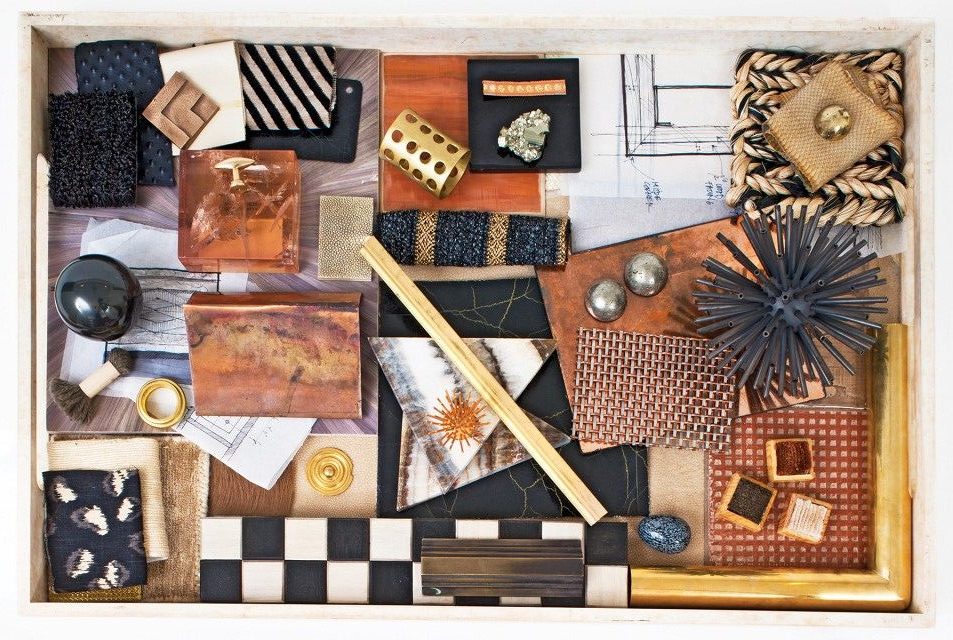
Mood Boards have their place within the Interior Design process as a result of they’re such an eye-catching, compact and informative snapshot of a proposed design. They assist the Interior Designer when speaking his/her design, with their lighthearted show of merchandise, types and colours. AND, they will also be a really helpful branding and advertising and marketing instrument. These little visible gems can be utilized in portfolios, web site/weblog content material and social media exercise.
In a trade where visual aesthetics is tremendously vital, it’s IMPERATIVE that Interior Designers equip themselves with the required expertise and information to supply Mood Boards which might be nicely structured and professional in look.
Start with Online Mood Board
The simplest option to create a web-based mood board is to make use of Pinterest. You may want a designers’ favourite, Milanote, the place you possibly can select from a library of photographs and/or add your personal images.
Knowing Your Style
- Traditional Interior
- Modern Interior
- Modern Traditional Design
- Contemporary Design
- Transitional Design
- Mid-Century Modern Design
- Shabby-Chic
- Industrial Design
- Eclectic Design
- Beach/Nautical
- Farmhouse Design
- Mediterranean Design
- Craftsman
- Scandinavian Design
- Rustic
- Asian Zen Design
- Tropical Design
- Southwestern
- Victorian
- Minimalist
- Vintage
- Bohemian
- Balinese
- Art Deco
- Hollywood Glam
Step 1: Create a New Board
The very first thing to do is to create a brand new board. Give it a name similar to “Living Room Mood Board” or “Bathroom Mood Board”.
Step 2: Select Favorite Pins
Undergo the related boards in your Pinterest account and choose the elements that suit your style, texture, and colour. When you do not discover every little thing you need, flick through Pinterest, Milanote, and numerous design websites for added concepts to save lots of to your mood board.

Step 3: Cull Pins
As soon as you have copied elements to your mood board, conduct one ultimate run-through the select elements that do not actually suit your theme, type, or colour palette.
Step 4: Save Your Online Mood Board
You’ll want to save your mood board on-line and create a backup in your arduous drive, pen drive, or you can easily save or export PDF file with your Milanote account.
Physical Mood Board
Not like a web-based mood board, a physical board shows precise samples of stuff you like. Along with photographs and journal cut-outs, this board supplies you with the chance to see and contact the precise merchandise you are contemplating for the Design project.

Step 1: Construct a Mood Board
A physical mood board might be made out of any materials, however, the best one is a reusable cork or foam board for pinning samples.
Step 2: Collect Photo Inspirations
You will create the bodily board the identical method you’d a web-based board. The principle distinction is you may have a mix of precise samples and photographs.
- Discover inspiration by thumbing by magazines and chopping out gadgets you want.
- Print the elements from an online magazine and out of your Pinterest boards.
Step 3: Acquire Precise Samples
You can also add actual samples of materials, such as:
- Fabric swatches: Most on-line and brick and mortar shops promote cloth swatches.
- Carpet samples: Carpet shops usually present small swatches of carpet samples or promote discontinued carpet samples you should utilize as a piece of information for texture and colour.
- Tile samples: Most tile stores sell individual tiles.
- Paint chips: Paint stores always have paint chip samples.
Step 4: Prepare Your Board
Prepare your board so it is easy to see the connection between colours, kinds, and textures of your picks. As soon as accomplished, snap a photograph of your mood board for an everlasting report.
Suggestions for a Successful Mood Board
There are a few things that will ensure the success of your board.
- Add only items you love to prevent going in the wrong direction.
- It’s usually best to work room by room.
- Arrange samples in relation to each other, such as a kitchen cabinet sample and a countertop sample.
- A rug, carpet, or flooring sample isn’t always large, but large samples will need to be cut smaller to fit your board.
- You can arrange furniture upholstery samples, draperies, and wall paint or wallpaper around the flooring sample.
- Group samples by styles, colours, and textures to present an overall picture.
Using a Mood Board
Creating a mood board for your interior design projects should be a no holds barred exercise. The goal is to create a visual representation of the things you find inspiring and desirable for your room design. Let us help you design a professional mood for your home, get your free quote here




